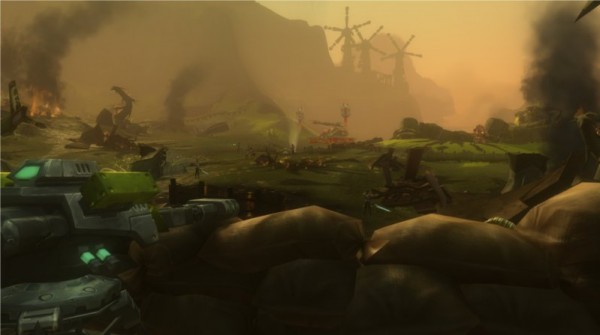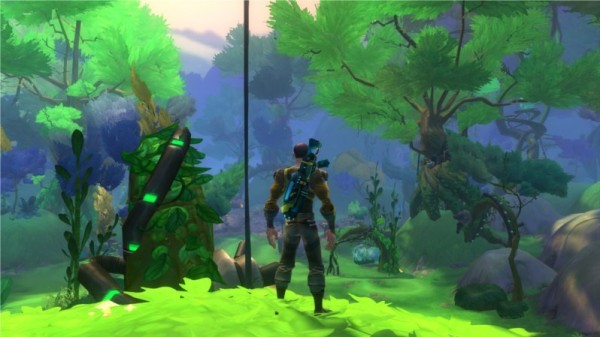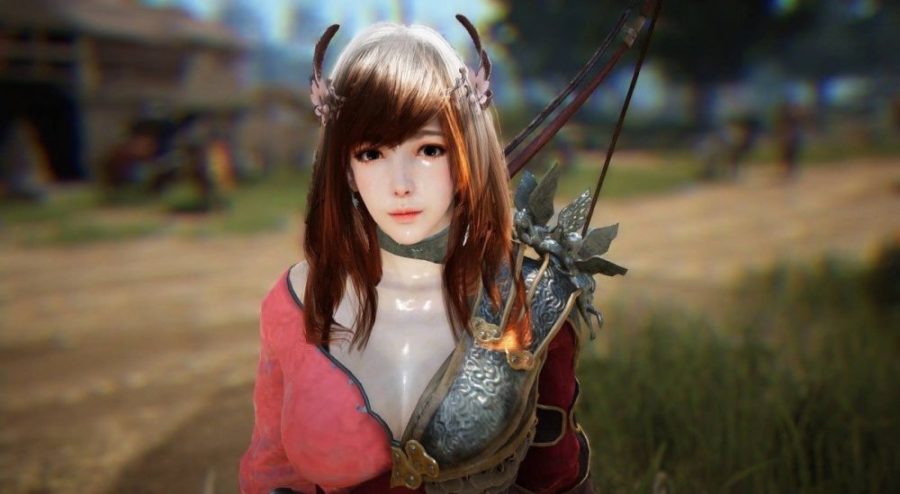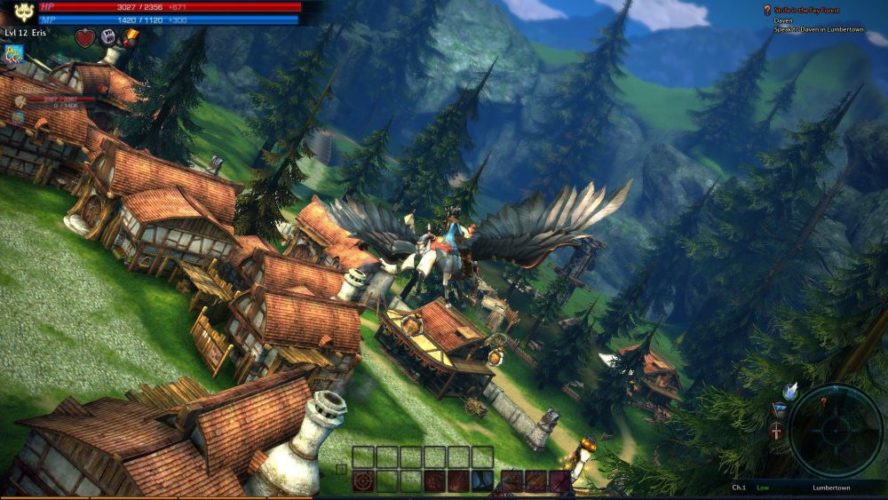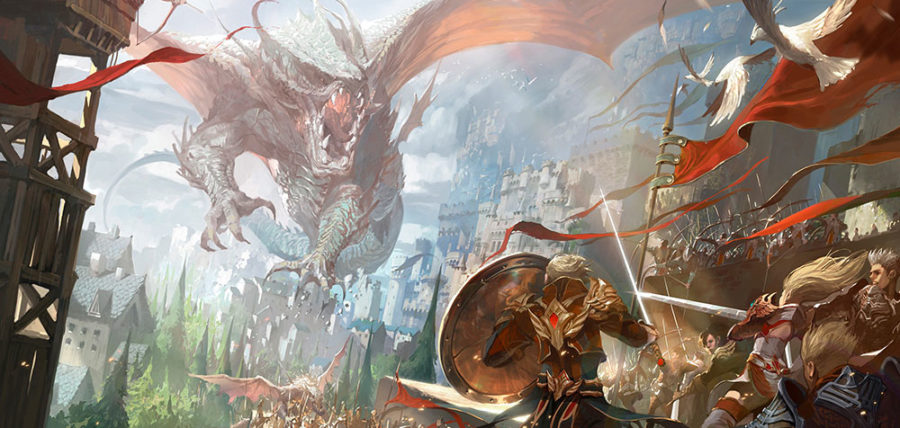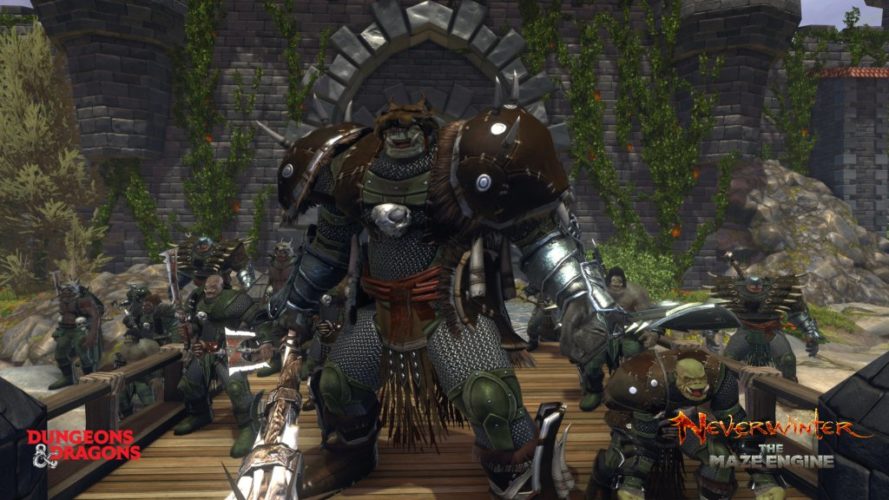Reviews & Previews
WildStar Review
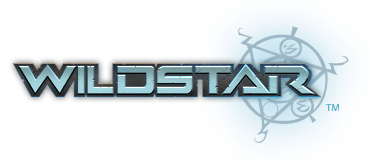
It’s becoming increasingly difficult for MMORPGs, let alone new properties to break out after one game has dominated critically and commercially for 10 straight years. After the high profile failures of Star Wars: The Old Republic and Elder Scrolls Online it’s understandable to approach any new game with caution, especially with one behind unreasonable marketing hype. WildStar is a game that has been developed by Carbine, made up from individuals involved in World of Warcraft, even encompassing talent from Valve and the fondly remembered City of Heroes. WildStar’s existence has been known for a few years now, and after the aforementioned profound failures approaching it with caution would only be the smart thing to do.
WildStar opens by throwing caution to the wind and breaks generic MMORPG tropes through introducing faster and looser gameplay mechanics. Jumping into WildStar for the first time, even as a seasoned veteran of the genre will feel like a new experience due to the lack of single target damage and exchanging it for a fixed cone of attack that changes depending on what ability the player chooses to use. Effectively every single attack in this game is an AoE, with no such thing as an auto-attack. In concept it’s a maddening idea that would only lead to mayhem, but in practice it finds a way to work superbly. Due to the timing and separate functions of each ability at one’s disposal, it ensures that most abilities don’t work the same way. This leaves the feeling of each action the player takes being fresh and the feeling never really goes away as you’re left tinkering with the placement of a shot and how to lead towards efficient combos. There’s an emphasis placed on aiming skill rather than repetition, and it helps keeping things from feeling mechanical by nature. There’s still a need for rotations, but to perform well in WildStar it takes more than knowing the correct buttons to press and on what, and it all flows surprisingly well.
Alongside the revamped PvE mechanics are certain professions a player can take which are offered at the creation of their character, ranging from Soldiers, Scientists, Explorers, and Settlers. The Soldiers themselves are the typical hold areas, test items and free friendly NPCs and offers itself as the most generic and familiar option. Scientists explore the lore and environments in the world, allowing one that was especially interested in the story of WildStar a profession to satisfy their curiosities. Explorers climb vistas and reach hard-to-find areas on a map and Settlers help themselves and other players with buffs, vendors, and flying waypoints to other areas depending on where the nodes lie. These separate quests offer the ability to break up the monotony of questing with side tasks that reward cosmetic armor, titles, and more importantly specific abilities that make fighting enemies easier in the world.
Enemy NPCs gain unique abilities that expand upon the generic auto-attack the player character until it or the player dies. Of course the auto-attack still exists, but NPCs throw in special abilities with the potential of doing tremendous damage even if it’s a lowly animal or grunt. If a player attempts the tried and true tanking and spanking, which involves standing in a stationary place and holding a monster’s attention, they will quickly be overwhelmed by special attacks that could kill them. The game allows for many of these attacks to be dodged through rolling to the side or simply running away, which in turn creates accountability in terms of a death. In a dungeon scenario, most deaths aren’t caused by another player, but instead one’s own mistakes. It becomes difficult to lump one’s own inadequacies as a player onto the healer or tank when the mechanics of the fights are so freeform. The dependency on movement can lead to chaos, which WildStar revels in.
This chaos can lead to confusion to those not practiced in the mechanics of WildStar, which involves throwing out any preconceived MMO ideas out of a tall building and tackling any and all objectives with an open mind. Changing the core concepts of a game from the very beginning after so many people spent over a decade with set patterns and mechanics can be jarring at the least and frustrating at its worst. WildStar also demands the player always pays attention regardless of the situation, which will disappoint many looking for a mindless romp through a pretty landscape, but offer a welcoming challenge to those willing to learn.
The landscapes and characters are indeed pretty, with each zone being wildly different from each other in terms of color and environment. The only thing that remains a constant throughout the planet is the very cartoonish artstyle that accompanies it. This game takes cartoonish to a wildly different level which will serve to turn off those looking for a serious backdrop, though the artstyle in WildStar is the best thing going for it aside from the actual gameplay mechanics. Each race, gender, and class look different from one another, with Carbine even managing to make their Elves and Orcs look new and exciting. Humans, typically the staple for a boring race in fantasy titles, manage to become fun to interact with and play as, with the Dominion Humans being snooty almost-Star-Wars-Imperial and their Exile counterparts being hillbillies in space with high tech weapons. The Exiles and Dominion as factions clash so well with the Dominion showing a sophisticated, high class city while the Exiles inhabit a ruin and ghetto. The cities alone tell the tale of who represents what, and it’s very rare that artstyle alone can tell the overarching narrative can be told from structures and cities alone, it’s when you know that it’s special.
The story tells the tale of both factions feeling wronged by the other, which leads to conflict between the two sides. What WildStar does to add a twist to the formula is stick its tongue so far into its cheek that it becomes lodged and impossible to remove, not that Carbine wants to remove it in the first place. The game almost never takes itself too seriously, even the evil undertones in the Dominion’s starting areas are highlighted with comically overdone stereotypes of Exile races and manages to lighten the mood on the reeducation being done in their ship with ridiculous scientific experiments being run by a tiny furry creature in a labcoat. The story even features a narrator, who delivers information about key areas in zones with a voice that wouldn’t sound out of place overdubbed on monster truck event commercials. This narrator also comments on leveling up, along the lines about how the “universe just got more awesome.” that helps nail down the lighthearted nature of the game’s environments and story.
One of the more anticipated features in WildStar is the player housing, which involves decorating a plot of land designated as your own with no outside player input on items. Typically this includes predetermined set pieces for homes and land, which Carbine does provide, though it doesn’t give the same set ground for accessories. The accessories one can gain through the game world either by crafting or fighting are fully customizable to an absurd degree. If the player wants a tiny table with cubs the size of a Human being it’s doable through the customizable scaling and rotation of items. If one’s prerogative is to make a by-the-books home with a carefully decorated indoor area then that is allowed, though if another wanted to go all out crazy and make a park for hoverboards it’s doable through patience. The housing wasn’t simply a tacked on feature to satiate a player’s urge to have something of their own in private, there are crafting stations, supply nodes, and bonuses one can gain in their own plot of land. There are rewards to having a home through bonus rested experience, or even boosted experience and money through PvP, crafting, or PvE. Everything about the player housing was done correctly, and Carbine provides the most depth for it out of any MMO on the market today, it’s surprisingly easy to sink in hours decorating land.
Aside from the PvE content WildStar offers up more straightforward PvP gamemodes with typical battlegrounds of the 10v10 variety and arenas which are both rated and unrated. The actual battlegrounds are unique as they are slight tweaks to the typical capture the flag and control point gametypes. For instance, WildStar’s version of capture the flag is replaced with a one-flag capture idea with randomized positioning near the middle of the map which the teams must grab and mount on their walls, with the maximum of five. On top of capturing the randomly spawning flag the teams are allowed the ability to steal enemy flags, which helps solve MMO’s problems with the lack of defense in battlegrounds. As long as one stays with the flag things will go smoothly was the previously established strategy, with defense being thrown to the wayside because why bother if all that awaits the defender is a 10v1 demolishing. Fights occurred in the middle of the map, where the winning team would go on to capture the flag. Having not only a middle flag spawning at random intervals means that balance must be obtained between attacking and defending, with some attackers even going after the enemy’s flags in their base to steal. These battlegrounds punish not only one-track thinking but encourages thinking uniquely depending on the situation of the battle and what resources to allocate where. The especially interesting PvP feature in WildStar is Warplots, a build-your-own-base endgame content that features 40v40 battles between other guilds and their own bases. The actual gamemode works a lot like the player housing with items being acquired in the world that can be added to one’s Warplot, but with consequences. If one were to lose a Warplot battle their own land would be destroyed, forcing them to rebuild. It adds tension to the fights on top of adding a unique twist to the PvP conventions which generally remains static.
Everything about WildStar was made with care, and an urge to break typical MMORPG conventions. In the sea of serious and gritty stories and environments, WildStar comes out with a funny, colorful story and world featuring cartoonish characters and ridiculous circumstances. Where most MMOs offers typical mechanical rotations for spells and attacks WildStar makes everything an AoE and makes fights chaotic and flowing. It reads off as a game that set out to betray and be the opposite of every MMORPG that has come out in the past decade and succeeds. Carbine created a game that is full of surprises from the opening cinematic, and broke any and all expectations set upon it in a gleeful manner. After countless disappointing MMORPG launches and games, it’s almost commonplace to approach a new game with caution, with expectations lowering with each failed promise. In the end, it’s comforting that a game can be made that raises the bar on a genre and does it in its own way. WildStar stands as a game with no real comparison next to it, and this writer would sooner lump it next to games like Ratchet & Clank rather than any contemporary MMO if only for it’s charming graphics and fun story. Not only did Carbine manage to make a fantastic title, it managed to make a stale genre fresh again, and hopefully it sets the stage for games, especially MMORPGs for the future to get a little insane with ideas and go for broke. Even if it fails, it’s more interesting than seeing yet another World of Warcraft clone.
Final rating:
Reviews & Previews
Valorant Game Review: Gameplay, Monetization, and Safe Top-Up Tips

Introduction: Enter the World of Valorant
Riot Games’ Valorant has become one of the most influential tactical shooters in recent years, blending precise gunplay with hero-style abilities. Unlike traditional FPS titles, Valorant requires players not only to aim well but also to think strategically about agent abilities, team synergy, and map control.
As players explore the game, many are drawn to unlocking weapon skins, battle passes, and premium bundles that enhance the overall experience. These items require in-game currency, which can be acquired when you choose to buy Valorant points. For a secure and smooth transaction, I’ve found LootBar to be one of the most reliable platforms, offering fast service and peace of mind when topping up.
Core Gameplay and Mechanics
Valorant is built on competitive integrity and teamwork. Each match pits two teams of five against each other, with one side attacking and the other defending. The attackers plant the “Spike” (similar to a bomb), while the defenders aim to prevent detonation.
What makes Valorant stand out is its unique blend of classic FPS gunplay with hero-based abilities. Unlike pure shooters, where winning relies solely on aim, Valorant demands strategic use of smokes, flashes, heals, and other utility skills. This layered complexity ensures that no two matches feel the same.
For casual players, the game offers quick modes like Spike Rush and Deathmatch, making it easy to enjoy Valorant in short sessions. Hardcore players, meanwhile, can grind ranked matches, aiming to climb from Iron all the way to Radiant.
Agents and Customization
The roster of agents in Valorant is one of its biggest attractions. Each agent has unique abilities that can turn the tide of a match, from duelists designed to secure kills to controllers that manipulate the battlefield with smokes and walls.
Customization plays a huge role in keeping the game fresh. Skins for weapons are more than just cosmetic—they provide sound effects, finishers, and animations that add flair to your victories. While skins don’t alter gameplay balance, they are highly sought after in the community, becoming a way to show identity and prestige.
This is where Valorant Points (VP) come in. Skins, bundles, and event passes all require VP, making them the primary currency for players who want to personalize their gameplay.
Valorant’s Payment System and Monetization
Overview of In-Game Purchases
Valorant uses two main currencies:
· Valorant Points (VP): Purchased with real money and used for skins, bundles, and event passes.
· Radianite Points (RP): Primarily used to upgrade weapon skins, often acquired alongside VP.
Players frequently invest VP to unlock exclusive cosmetics, such as seasonal collections, limited bundles, or battle passes. These time-sensitive offers often create a sense of urgency, encouraging players to recharge quickly so they don’t miss out.
Pay-to-Win Considerations
One of the strongest aspects of Valorant’s system is that it avoids being “pay-to-win.” Spending money does not grant raw gameplay advantages—accuracy, reflexes, and teamwork still determine victory. Instead, purchases enhance the game’s aesthetic and social experience.
That said, investing in skins can save time compared to grinding for smaller rewards, and it allows players to participate fully in seasonal events without limitations.
Safe, Fast, and Reliable Top-Up Solutions
When it comes to topping up, safety and speed are critical. Players don’t want to risk their accounts or experience delays. That’s why many turn to platforms like LootBar, which emphasize secure transactions, fast delivery, and a smooth user interface.
LootBar stands out with strong trust metrics and a reputation among gamers for reliability. Using it ensures you can focus on playing Valorant, rather than worrying about whether your points will arrive on time.
Community, Social Features, and Competitive Scene
Valorant thrives not only as a game but also as a global esports phenomenon. It’s ranked ladder fuels competition, while international tournaments like the VCT (Valorant Champions Tour) attract massive audiences.
For casual players, the game’s social features make it easy to connect with friends, form squads, and join communities. Limited-time events and seasonal missions encourage teamwork and participation, keeping the community active year-round.
This dual approach – serving both casual and competitive players—is one of Valorant’s greatest strengths.
Pros and Cons of Valorant
Pros
· Tight, strategic gameplay with high skill expression
· Wide roster of agents with unique playstyles
· Regular updates and seasonal events keep the game fresh
· Strong esports ecosystem and global recognition
Cons
· Steep learning curve for beginners
· Skins and bundles can be costly
· Free players may face long grinds to maximize progress
While these drawbacks exist, they are softened by the fact that the core gameplay remains free-to-play and fair. Occasional VP purchases can help smooth the journey without undermining balance.
Tips for New Players
For those just starting out, it’s wise to:
· Begin with easier agents like Phoenix or Sage to learn core mechanics.
· Play unranked modes before diving into competitive matches.
· Save Valorant Points for bundles or battle passes, which offer more value.
A small VP purchase early on can also give new players access to skins that make the experience more enjoyable, without being overwhelming.
Conclusion: Is Valorant Worth Playing?
Valorant has cemented its place as one of the best tactical shooters available today. It combines strategic depth, fast-paced gunplay, and a thriving community, making it appealing to both casual and competitive players.
For those looking to personalize their journey, unlocking skins and bundles is part of the fun. The safest and most convenient way to do so is to buy Valorant points through LootBar. With a trusted platform handling the transaction, players can focus on what matters most—outsmarting opponents and enjoying every match.
Features
Exploring Valorant eSports Stats: Unveiling the Metrics Behind Competitive Excellence

In the rapidly expanding realm of Valorant eSports, statistical analysis plays a pivotal role in understanding player performance, team dynamics, and the strategic nuances that define success in competitive play. This article delves into the significance of Valorant eSports stats, their impact on the competitive landscape, and how they empower players, teams, and fans alike.
Key Metrics in Valorant eSports Stats
Valorant eSports stats encompass a wide array of metrics that provide insights into player proficiency and team strategies. These include individual performance indicators such as kill-death ratios (K/D), average damage per round (ADR), headshot percentages, and assist counts. Team statistics such as round win percentages, first blood percentages, and economy management efficiency further illuminate strategic strengths and areas for improvement.
Analyzing Player Performance and Contribution
For professional Valorant players, statistics serve as a critical tool for evaluating individual performance and contribution to team success. By analyzing metrics like K/D ratios and ADR, players can assess their impact in securing eliminations, dealing damage, and supporting team objectives. This data-driven approach enables players to identify strengths to leverage and weaknesses to address, enhancing their overall effectiveness in competitive matches.
Strategic Insights and Adaptation
Valorant eSports stats provide valuable strategic insights that shape team tactics and gameplay adaptations. Coaches and analysts analyze statistical trends to optimize agent selections, refine map strategies, and counter opponents’ playstyles effectively. The ability to leverage data-driven decision-making empowers teams to evolve their tactics, adapt to meta-game shifts, and maintain a competitive edge in the dynamic world of Valorant eSports.
Tracking Tournament Trends and Meta-Game Evolution
Beyond individual matches, Valorant eSports stats track broader tournament trends and meta-game evolution. Historical data on agent pick rates, map preferences, and round outcomes reveal emerging strategies and meta-shifts over time. This analytical depth allows teams and analysts to anticipate trends, innovate strategies, and stay ahead of competitors in high-stakes tournaments and league play.
Fan Engagement and Spectator Experience
Valorant eSports stats enrich the spectator experience during live broadcasts and tournament coverage. Fans can follow real-time updates on player performances, compare stats across matches, and engage in discussions about standout plays and strategic decisions. Interactive platforms and statistical dashboards enhance viewer engagement, fostering a deeper connection with the competitive narratives unfolding in Valorant eSports.
Impact on eSports Betting and Fantasy Leagues
Valorant eSports stats play a crucial role in eSports betting markets and fantasy leagues, where informed decision-making hinges on statistical insights. Bettors and fantasy league participants leverage player and team stats to assess form, predict match outcomes, and manage their investments strategically. Real-time updates and comprehensive data analysis enhance the strategic depth and excitement of eSports engagement for fans worldwide.
Technological Advancements and Data Visualization
Advancements in technology have revolutionized how Valorant eSports stats are accessed and analyzed. Streaming platforms and eSports websites offer sophisticated data visualization tools, interactive heatmaps, and player performance overlays that enhance the depth and accessibility of statistical analysis. These technological innovations provide analysts, commentators, and fans with enhanced insights into gameplay dynamics and strategic decision-making.
Future Innovations in Statistic Analysis
As Valorant continues to evolve as an eSports powerhouse, the future of statistical analysis promises further innovations. AI-driven predictive analytics, enhanced machine learning algorithms, and real-time performance tracking technologies are poised to revolutionize how eSports stats are processed and utilized. These advancements will elevate the precision, depth, and predictive capabilities of statistical analysis in Valorant eSports, shaping the future of competitive gaming.
Casual
Encouraging Growth and Motivation: Resources for Child Development

Child development is a complex journey marked by critical milestones where each stride forward builds upon the foundation of the previous one. Acknowledging children’s individual needs, pediatric therapy services tailor strategies to foster physical, emotional, and cognitive growth. To support this transformative process, environments that prompt curiosity and engagement, coupled with advanced educational tools, play an instrumental role in shaping young minds. These resources, carefully selected and applied, can significantly amplify a child’s developmental trajectory. Keep reading to learn about the effective ways these tools and techniques can aid in advancing childhood milestones.
Pediatric Therapy Services: Enhancing Developmental Milestones
Pediatric therapy services support children as they reach and surpass developmental milestones. These services, often provided by skilled therapists, address various growth challenges, ensuring each child has the best possible start in life. From speech and occupational therapy to physical and behavioral interventions, these professionals tailor their approach to meet the unique needs of every young patient.
Therapists work relentlessly to motivate children, fostering an environment where milestones are not merely achieved but celebrated. Through personalized, one-on-one sessions, children gain the confidence and skills necessary to navigate their developmental journeys more easily. The trust between therapist and child is a solid foundation for consistent progress and paves the path for lifelong learning and adaptation.
Resource provision is a key component of pediatric therapy, equipping parents with the tools to continue therapy practices at home. Effective communication between therapists and families ensures a cohesive strategy that envelops the child’s daily routine, enhancing the therapy’s impact. It also allows parents to identify subtle progress, reinforcing their pivotal role in the child’s developmental success.
If you’re looking for pediatric therapy in your area, a simple Google search like “pediatric therapy Arizona” will help you find local providers and services tailored to your child’s needs, ensuring they receive the specialized care necessary for their development.
Optimizing Play Spaces: Creating Environments for Learning and Exploration
Optimized play spaces are vital platforms where children engage with their world, build skills, and unleash their creativity. Designers of such areas pay astute attention to elements that promote safe exploration and intellectual stimulation. A thoughtfully arranged play environment serves as a place of entertainment and a crucible for burgeoning development.
Professionals incorporate a variety of tactile and visual stimuli within play areas to cater to diverse developmental needs and interests. Stimulating sensory experiences is central to cognitive and motor skill refinement among younger populations. The intentional selection of colors, textures, and interactive features sparks curiosity and encourages physical activity, which is fundamental to healthy growth.
Accessibility remains paramount in creating play spaces, ensuring they cater to children across all abilities. Including adaptive resources within these environments demonstrates a commitment to inclusive development, allowing every child to participate and benefit from the joy and learning play offers. Such inclusiveness fosters a sense of community and belonging, which is essential for emotional and social development.
Affording children autonomy in their play advances self-directed learning and problem-solving capabilities. When children feel empowered to make choices within their play, they better understand their preferences and abilities, setting the stage for confidence and self-awareness — qualities that are instrumental as children grow and transition through life’s stages.
Additionally, incorporating elements like fake plants or outdoor plants from retailers like Nearly Natural outdoor plants into play spaces can enhance children’s sensory and aesthetic experience.
Interactive Learning Tools: Technology and Resources for Cognitive Development
Interactive learning tools harness technology’s power to solidify children’s cognitive development. These digital resources provide an array of engaging, educational content that aligns with critical thinking and problem-solving skills.
Software and applications designed for children’s learning capitalize on the allure of multimedia to capture young minds. Effective education solutions provide children with stimulating challenges that are age-appropriate and aligned with developmental targets.
The discerning use of educational technology in classrooms and homes can reinforce concepts and skills taught through traditional methods. It creates a harmonious blend of instruction and interactive play, thereby cementing a child’s understanding and retention of information.
Providers of such educational platforms are ever vigilant, updating content to reflect new educational strategies and the latest academic research. Thus, children equipped with these technological tools remain at the vanguard of current learning methodologies, all while engrossed in fun and dynamic ways.
Overall, caregivers and educators can provide comprehensive support for children’s developmental journeys by integrating pediatric therapy services, optimized play spaces, and interactive learning tools. These resources nurture their physical, emotional, and cognitive growth and cultivate a lifelong love for learning and exploration.
-

 Guides6 years ago
Guides6 years ago6 Proven Ways to Get more Instagram Likes on your Business Account
-
Mainstream11 years ago
BioWare: Mass Effect 4 to Benefit From Dropping Last-Gen, Will Not Share Template With Dragon Age: Inquisition
-

 Mainstream7 years ago
Mainstream7 years agoHow to Buy Property & Safe Houses in GTA 5 (Grand Theft Auto 5)
-

 Guides1 year ago
Guides1 year agoFree Fire vs PUBG: Comparing Graphics, Gameplay, and More
-

 Casual2 years ago
Casual2 years ago8 Ways to Fix Over-Extrusion and Under-Extrusion in 3D Printing
-
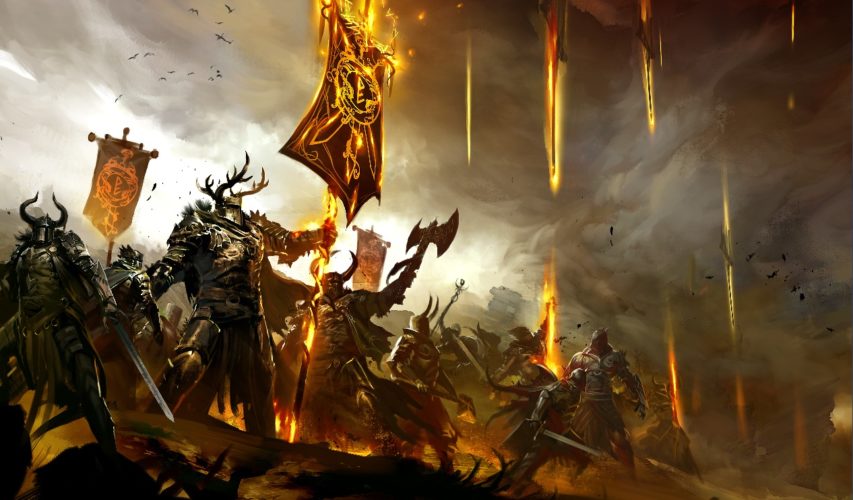
 Mainstream13 years ago
Mainstream13 years agoGuild Wars 2: The eSports Dream and the sPvP Tragedy
-

 Other2 years ago
Other2 years agoAjjubhai UID: Free Fire Details & Earnings
-

 Gaming News2 years ago
Gaming News2 years agoSwiping, Tapping, and Tilting: How Mobile Games Are Played Today

